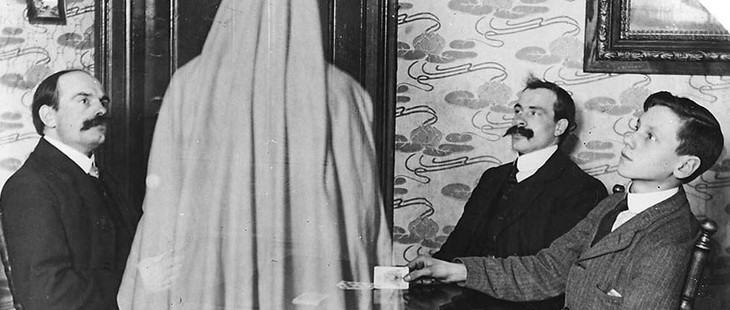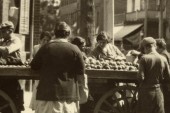
Where does the gangster end and the business man begin? At the 1901 inquest into police graft and gaming houses the question was laughable: a gangster was a gangster. I am, claimed Abe Orpen, the proprietor of a brick manufacturing business. Do your downtown offices have any other business function? I decline to answer so as to not incriminate myself. Do you own the gambling house in the Junction? Ditto. What is the primary function of your assistant? Same.
Sitting across from Orpen was the Chief of Police. Under usual circumstances, the Chief would no doubt derive some pleasure from watching such an obvious and well known (though, to the career police officer, incongruously beloved) criminal squirm under oath. But on this day the two were in on it together. Several months earlier the Toronto Evening News reported that the gangster had bought off the police (the paper’s Tory editor had long had it in for Orpen, who, in addition to his brick business and gambling ventures was a big deal in the Liberal party). The police, it was widely understood, would shield Orpen from investigation while he would ensure their palms never wanted for grease. What else could explain, the News asked, the fact that gambling dens were being shut down around the city but Orpen’s were left untouched by Toronto’s finest? One of which was right around the corner from the Police HQ.
Toronto, like most North American cities, had a healthy gambling culture at the end of the 19th century. Enterprising citizens would often organize card games in their living rooms (taking, at least, a 10 percent cut); others might have roulette tables in their den, or full-fledged casinos in their basements. For a long time no one cared, least of all the police. But by the late 1890s Toronto the Good reeled its conspicuous head: moral purity became the watchword of the day. Police began to track down the city’s most notorious gamblers, raiding their businesses and homes.
Gamblers reacted: most got rid of their poker tables and gambling paraphernalia and learned to love craps. If the cops showed up, you threw the dice out the window robbing the boys in blue of any evidence of gambling; games could be set up just about anywhere and at any time. Others reveled in their persecution. A few set up explicitly criminal casinos. One-stop vice shops, these were often billed as casinos but attached to a bawdy house. They lacked, however, organization and proved to be easy targets for the police while providing fodder for newspapers and moralists alike. Toronto’s respectable gamblers, however, wanted a game and venue better suited to their social position.
Enter Orpen. In the neighboring town of the Toronto Junction (not yet part of the city proper) Orpen opened a casino. At the corner of Dundas and Weston roads (now Dundas and Keele) one could gamble free of harassment from the police. But Orpen’s central innovation lay in horse racing. Connected by telegraph to the major tracks in the American deep south, a Torontonian could bet on any major race. Success engendered more success and Orpen opened branches of his Junction casino in downtown Toronto: if you knew the right cigar shop or, yes, ice cream parlour, you could wire a bet to the gambler’s HQ.
If you look into the shadows, however, the shadows look into you. Most bets were done on credit and the consequences for not paying Orpen were more than a little dire. (Long after Orpen died, bullet holes were found in some of his offices.) When one of Orpen’s associates was arrested by police he, warning them of his powerful friends, threatened their lives. And after Orpen named one of his new horses after a police inspector rumours proliferated that the force was in his pocket. (They reached such a fever pitch that, during the inquest, Orpen acknowledged that many in the city thought the police answered to him, though he didn’t explain why, as a brick manufacturer, people would think that.)
By the end of the inquest, after a number of witnesses ‘failed to recollect’ major pieces of evidence, it was officially concluded that the police indeed operated independently of Orpen. The mayor cryptically made mention of senior businessmen who had damning evidence but, for fear of reprisal, would not testify (one wrote in a letter that Orpen had made Toronto the world capital of gambling). Given Orpen’s careful and professional management of his gambling dens, not to mention connections, police went on to focus their prosecutions on the more haphazard operations they were able to pursue with comparably less effort.
Orpen took that news and ran with it. Again, just outside city limits, Orpen opened a new casino. Garish and opulent, it catered to a high class clientele though one still had to check one’s gun at the door and submit to a pat-down search. In 1907, he bought the Dufferin Racetrack (a site now occupied by the Dufferin Mall) for $400; and when anti-gambling sentiment in the city convinced regulators to withdraw the track’s permit, Orpen appealed to Prime Minister Laurier and was granted a federal gambling charter, thus proving it’s advantageous to be a Liberal fixer. A decade later Orpen expanded, opening the Thorncliffe Park Raceway (the track is long gone but the neighborhood continues to bear its name) and the Longbranch Raceway. (All these tracks were eventually consolidated at the Woodbine racetrack.)
 Dufferin Race Track, 1908-10 (City of Toronto Archives)
Dufferin Race Track, 1908-10 (City of Toronto Archives)
By the 1930s Orpen was a bona fide respectable citizen. His operations were now entirely legal and, despite his brushes with the law (he was almost sent to prison twice), he was a major philanthropist and owned a sprawling business empire. But he still couldn’t quite escape his past: a year before his death he was kidnapped, but, after paying ransom, refused to participate in the police investigation. Similarly, his brick works, on occasion, mysteriously caught fire.
But his legacy was gambling. When Ernest Hemingway worked for the Toronto Star and lived here he observed that the city is “a famous betting town.” If you knew what to look for (and Hemingway, a prolific gambler, certainly knew how to look) you could see Orpen’s influence everywhere. At lunch hours, shiny sedans would crawl from corner to corner collecting bets from bankers while keeping an eye out for the police. A “web of wire” connected small shops to major racetracks around the world. These were not the halcyon days of yore when bets were made on credit, and then only once a week, but Toronto, Hemingway knew, liked to gamble and, slowly, that was becoming a-okay in the city.
By the 1940s the city was ringed with casinos and bookkeepers. Keeping with Orpen tradition it was rumoured that a cut of all profits flowed into Liberal coffers (maybe the party should look to its history to compensate for the disappearing per vote subsidy). A Harvard study estimated that by 1942, when they were all finally shut down, ten major betting parlours outside city limits and more than 400 betting outposts in the city proper. Entirely professionalized bookies almost never spoke to gamblers, they just processed paper and wire orders. Begging the questions again: where does the gangster end and the business man begin?

















